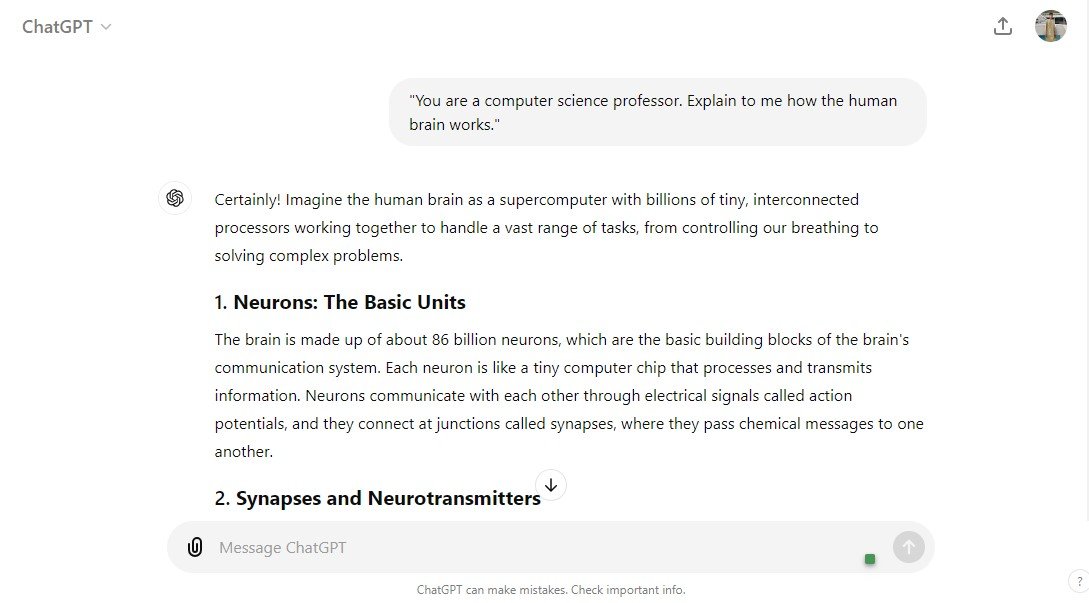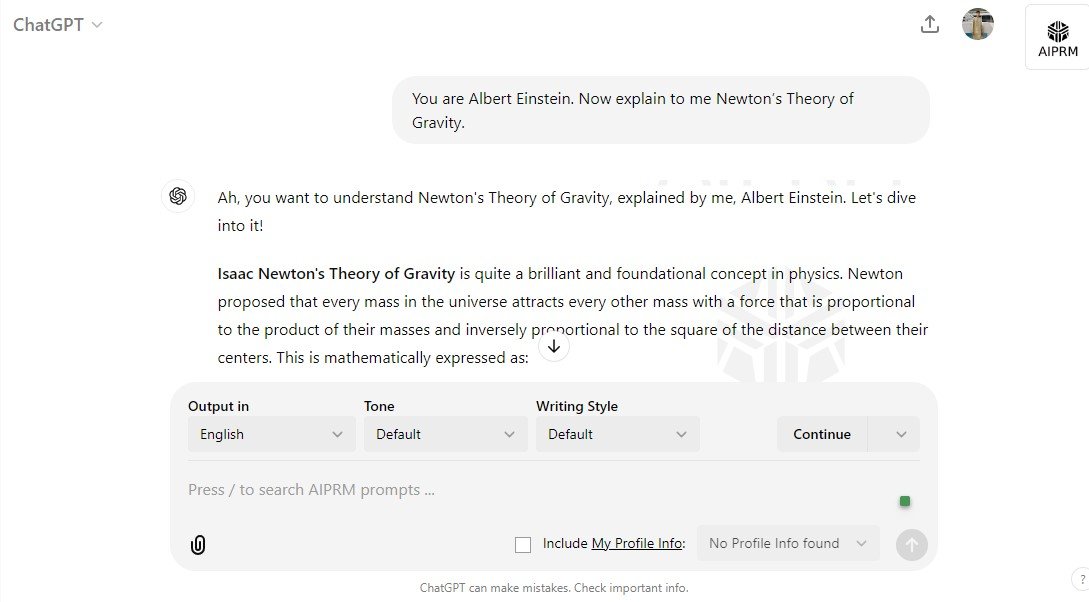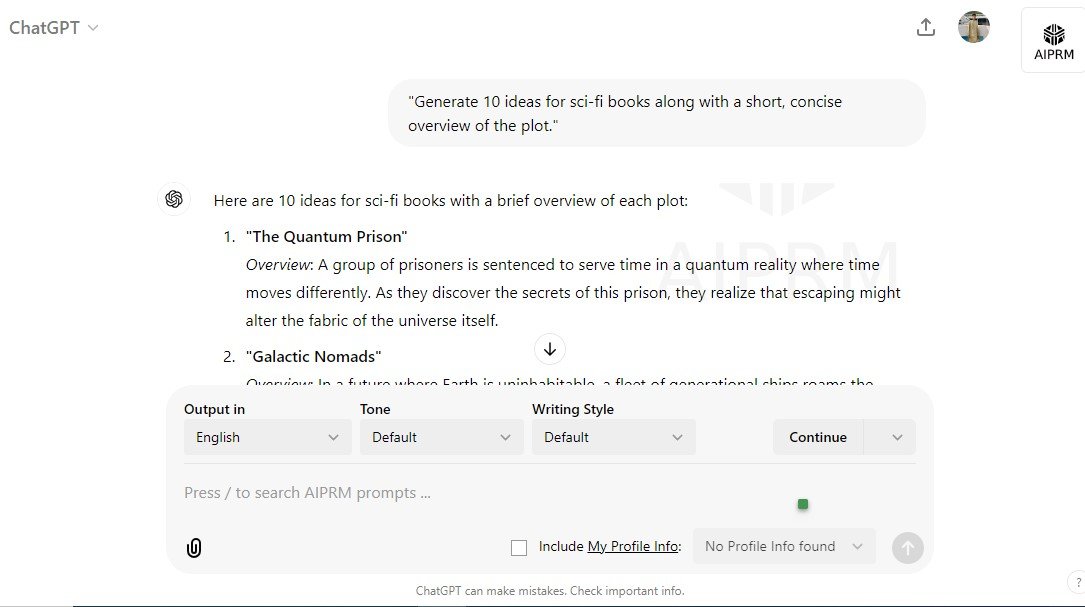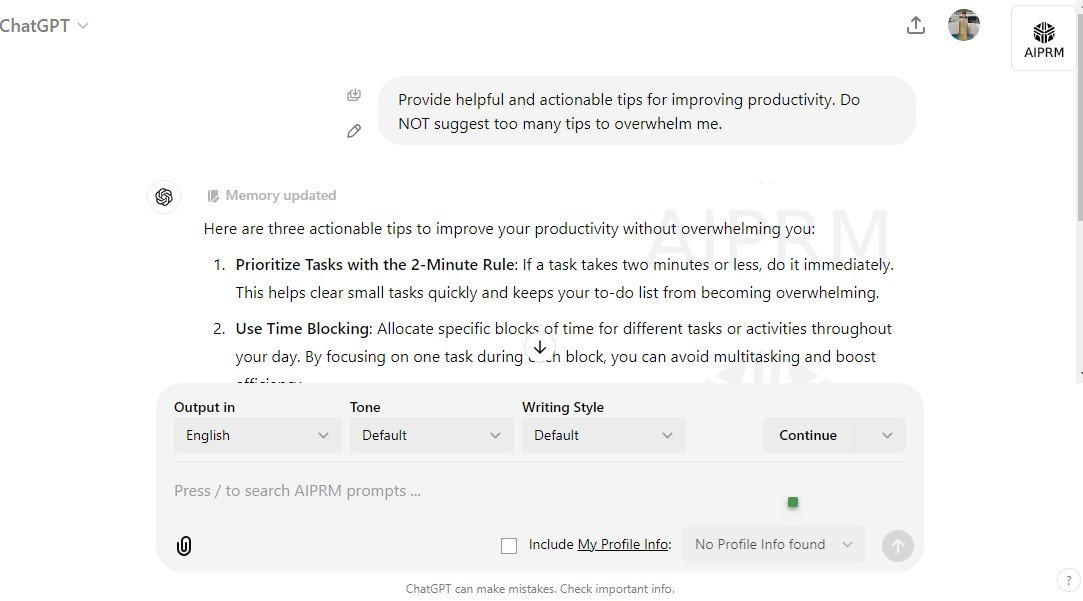The 4 Most Powerful AI Prompting Techniques

Are you fed up with AI chatbots that give you average answers? It could be because of the way you ask your questions. This article will talk about five powerful AI prompting techniques that will make the answers you get from chatbots like ChatGPT, Claude, or Gemini much better.
5 Useful AI Prompting Techniques
We Use Chatgpt to show the prompt response:
1. Prompting based on roles and personas
When you use role prompting, you don’t just tell the AI what to do; you also give it a part to play. For instance, you can ask it this instead of “How does the human brain work?”
"You are a computer science professor. Explain to me how the human brain works."
By telling the AI to play a certain part, you can control how it acts. If I had asked ChatGPT to explain how the human brain works in the above case, I would have gotten a biological answer.

But because I’m not very good at biology and am better at computers, I ask it to describe things as if I were a computer science professor. This answer is easier for me to understand because it relates to things I already know about, like computer science.
Role prompting is also helpful because it gives ChatGPT a special personality with its own set of behaviors. This could make the answers more interesting. As an example:
"You are a 90-year-old computer science professor who likes to tell dad jokes. Explain to me how the human brain works."
This type of role prompting is also called “persona-based prompting,” because you are not giving ChatGPT a specific job but a Persona.
The main reason people use persona prompting is for fun, but it can also be used to have a more real chat with a famous person. Like this, here’s something you can try:
“You are Albert Einstein. Now explain to me Newton’s Theory of Gravity.”

For those who were interested, here are ChatGPT’s answers to each question:
2. Zero-Shot, One-Shot, and Multi-Shot Prompting
All of these are types of prompting in which you give the AI a certain number of examples to look at before you ask it to do something. Like the name says:
- In zero-shot prompting, no examples are given.
- A one-shot prompt provides a single example.
- Multi-shot, aka few-shot prompting, offers multiple examples.
When we ask the AI to do something, we don’t usually give it examples. That’s why most of our prompts are zero-shot by default. So, the AI just comes up with an answer based on how it was taught by default. Now, if we don’t like the generation, we can add some examples to make it clear what we want.
Here’s an example of a zero-shot prompt:
“Generate 10 ideas for sci-fi books along with a short, concise overview of the plot.”

Even though the ideas are good, ChatGPT puts the book titles and plots together in one paragraph.
It will be easier for me to copy and paste the thoughts into a spreadsheet if it is split up. Let’s use a one-shot prompt to figure this out:
It does a better job of separating the book title from the plot, as you can see:
But I wanted the first 10 to be the names of books and the next 10 to be the plots. It’s clear why ChatGPT did this wrong, but let’s fix it with a multiple-shot warning.

And we have the perfect response:
Most of the time, giving more examples (multi-shot) leads to more accurate and relevant answers. But zero-shot can be useful for seeing how strong the AI really is or when you want more varied and surprising results.
Related: Generative AI is Completely Shameless. This is What I Want to Be
3. The Chain of Thought Prompt
It’s the same as telling an AI to “show its work” when you use Chain of Thought prompting. You’re not just giving the AI an answer; you’re telling it to show you how it came to its conclusion.
This method works especially well for tough tasks or when you want to know how the AI makes decisions.
"Solve this word problem and explain your reasoning step-by-step:"
A store sells notebooks for $2.50 each. If you buy 3 or more, you get a 10% discount on the total price. How much would you pay for 5 notebooks?
And here’s the conclusion:
If you ask for step-by-step thinking, along with the answer, you’re more likely to get a full, logical explanation.
4. Negative Prompting
Giving the AI negative prompts means telling it what you don’t want. This can work surprisingly well to keep the AI from making common mistakes or showing information that isn’t wanted.
Usually, you’d type in a question and then see the answer. You may notice that the AI model tends to use certain sentences, words, formatting, and other things. You can change this if you don’t like it by using negative prompts.
For example, if you want business slogans, you could use this kind of negative prompting:

“Provide helpful and actionable tips for improving productivity.
Do NOT suggest too many tips to overwhelm me.”
Here is a side-by-side look at what the AI said when it was told something bad and when it wasn’t:
Here are the four AI prompting techniques I think will help you get better at AI. As always, the important thing is to try new things. You can try combining skills and different methods to find the best one for your needs. You’ll be able to use AI language models to their fullest potential once you get good at writing questions.











